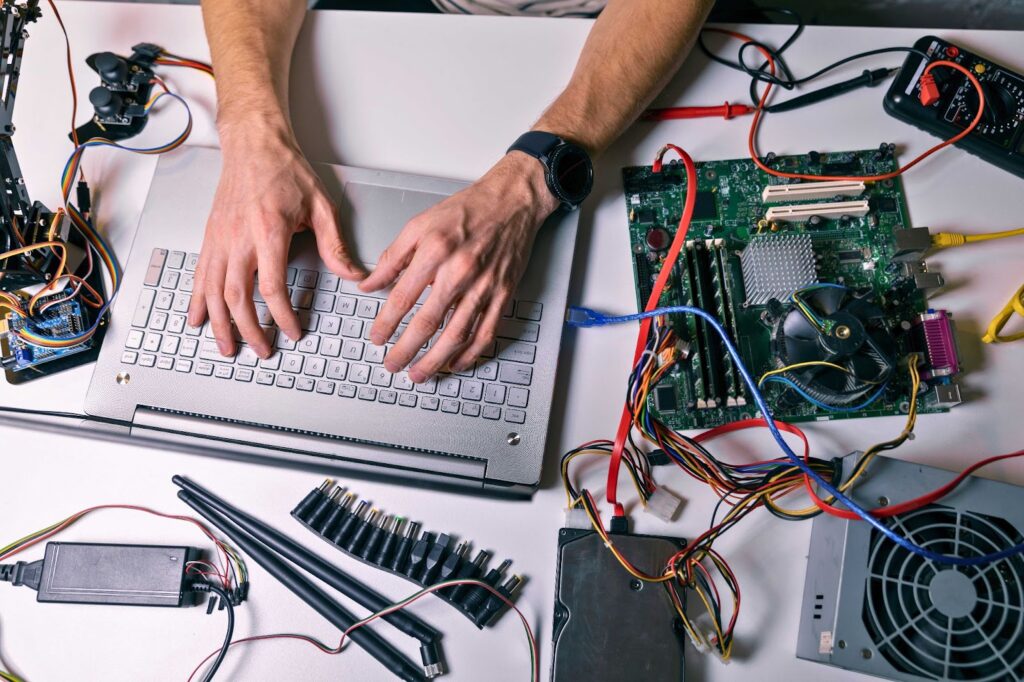Embedded systems are at the heart of modern technology, playing a critical role in devices that range from simple household gadgets to complex industrial machines. These systems are characterized by the integration of hardware and firmware, working together to perform specific tasks efficiently. Unlike general-purpose computing systems, embedded systems are purpose-built to interact with hardware components in real-time environments. This relationship between hardware and firmware is fundamental to the functioning of embedded systems.
In this article, we will explore the integration of hardware and firmware in embedded systems, focusing on the significance of each, how they interact, and the challenges that developers face when creating reliable and efficient embedded solutions.
Understanding Embedded Systems
Before diving into the integration of hardware and firmware, it’s essential to understand what an embedded system is. An embedded system is a combination of computer hardware and specialized software (firmware) designed to perform a dedicated function. Unlike general-purpose computers, which are designed to handle a variety of tasks, embedded systems are typically optimized for a specific operation. Examples of embedded systems include:
- Automotive control units (such as engine control modules)
- Home appliances (microwaves, washing machines)
- Medical devices (pacemakers, blood glucose monitors)
- Consumer electronics (smartphones, smart TVs)
The main components of an embedded system are:
Hardware:
Includes the processor, memory, sensors, actuators, communication modules, and power sources.
Firmware:
The software embedded in the hardware that controls its operation. Firmware is stored in non-volatile memory (such as flash memory) and is responsible for managing hardware resources and facilitating communication between different components.
The Role of Hardware in Embedded Systems

Embedded hardware consists of both the processing unit and the peripheral components that support the system’s function. These components are often custom-designed or selected based on the specific needs of the application. The hardware in an embedded system can be as simple as a microcontroller or as complex as a multi-core processor combined with specialized sensors, actuators, and communication interfaces.
Key hardware components in an embedded system include:
1. Microcontrollers (MCUs) and Microprocessors (MPUs)
At the core of any embedded system is the microcontroller (MCU) or microprocessor (MPU). The choice between an MCU or MPU depends on the complexity of the system and its power consumption. MCUs are typically used in simpler, low-power systems, while MPUs are found in more complex, high-performance systems.
- MCUs: These are integrated circuits that include a CPU, memory, and peripherals on a single chip. They are designed for low-power operations and are widely used in small, power-sensitive applications such as IoT devices.
- MPUs: These are more powerful than MCUs and are used in applications requiring high processing power and memory, such as smartphones or automotive infotainment systems.
2. Sensors and Actuators
Sensors are used to gather data from the environment (such as temperature, light, motion, etc.), while actuators are used to control physical components (such as motors, valves, or lights). The hardware design of an embedded system typically includes sensors and actuators tailored to the specific application.
3. Memory
Embedded systems often rely on a combination of volatile (RAM) and non-volatile (flash or EEPROM) memory. Non-volatile memory is used to store firmware, while RAM is used for temporary data storage during runtime.
4. Communication Interfaces
Many embedded systems require communication with other devices, either wirelessly (Wi-Fi, Bluetooth, LoRa) or through wired interfaces (SPI, I2C, UART, CAN). The choice of communication protocol depends on the application and the specific requirements for speed, range, and reliability.
The Role of Firmware in Embedded Systems

Firmware is the software that directly interacts with the hardware, making it operational and functional. It controls the hardware components, manages tasks, and ensures the device operates as intended. Firmware runs on the microcontroller or microprocessor and is stored in non-volatile memory, ensuring it remains intact even when the device is powered off.
Firmware is often designed to perform the following key tasks:
1. Hardware Abstraction
Firmware abstracts the complexity of hardware by providing a software interface that simplifies communication between hardware components and the application software. This allows higher-level code to interact with hardware without needing to manage the low-level details of sensor data or peripheral control.
2. Real-Time Control
Many embedded systems operate in real-time environments, meaning they must respond to inputs and perform tasks within a specific time frame. Firmware is responsible for ensuring that the system meets these real-time requirements. This includes tasks like reading sensor data, controlling actuators, and processing inputs in a timely manner.
3. Power Management
Power consumption is a critical concern in many embedded systems, especially in battery-powered devices. Firmware often includes power management algorithms that optimize energy usage by turning off unused peripherals or putting the system into low-power modes when full operation is not required.
4. Security
As embedded systems become more interconnected (especially in IoT applications), security has become a major concern. Firmware is responsible for implementing security features such as encryption, authentication, and secure boot mechanisms to protect the system from unauthorized access or tampering.
How Hardware and Firmware Work Together
The success of an embedded system relies on seamless integration between hardware and firmware. The hardware provides the physical components needed to interact with the environment, while the firmware orchestrates the operation of these components, ensuring the system performs its intended function.
Here’s how hardware and firmware work together in embedded systems:
1. Boot Process
When an embedded device is powered on, the firmware is responsible for initializing the hardware. This process involves setting up the microcontroller, configuring peripherals, and running diagnostics to ensure that the hardware is functioning correctly. After initialization, the firmware enters its main loop, continuously interacting with the hardware to perform the device’s functions.
2. Hardware Control
Firmware communicates directly with hardware components through registers and memory-mapped interfaces. For example, the firmware can read data from a sensor by accessing the sensor’s registers, process that data, and then use it to control an actuator. This interaction must be carefully timed, especially in systems with real-time requirements.
3. Interrupt Handling
Embedded systems often rely on hardware interrupts to handle real-time events. When an event occurs (such as a button press or a sensor reaching a threshold), the hardware generates an interrupt, signaling the firmware to handle the event. The firmware then pauses its current tasks, processes the interrupt, and returns to its regular operations. This ensures that the system can respond to critical events promptly.
4. Communication
Many embedded systems need to communicate with other devices or networks. Firmware manages communication interfaces such as UART, I2C, SPI, or wireless protocols. This allows the hardware to send and receive data, enabling the embedded system to integrate into larger systems or networks.
Challenges in Integrating Hardware and Firmware

While hardware and firmware integration is critical to the success of embedded systems, it comes with a range of challenges:
1. Timing and Real-Time Constraints
Many embedded systems operate in real-time environments, where tasks must be completed within strict time limits. Ensuring that firmware can meet these timing constraints while managing multiple hardware components can be difficult.
2. Resource Constraints
Embedded systems are often resource-constrained, meaning they have limited memory, processing power, and power availability. The firmware must be optimized to work efficiently within these constraints without sacrificing performance or functionality.
3. Compatibility
Ensuring that the firmware is compatible with the hardware is another challenge, particularly in complex systems with multiple hardware components from different vendors. Incompatible firmware can lead to hardware malfunctions or inefficiencies.
4. Debugging
Debugging embedded systems is often more challenging than debugging traditional software due to limited visibility into hardware processes and the real-time nature of many embedded applications.
Conclusion
The integration of hardware and firmware in embedded systems is a fundamental aspect of modern technology, from simple gadgets to complex industrial machines. Hardware provides the physical infrastructure for these systems, while firmware brings the hardware to life by managing its operation. Together, they create powerful, efficient, and reliable systems capable of performing specialized tasks in real-time environments.
Developing embedded systems requires a deep understanding of both hardware and firmware, as well as the challenges associated with their integration. By mastering this relationship, developers can create more robust, efficient, and secure embedded systems capable of meeting the demands of today’s increasingly interconnected world.
